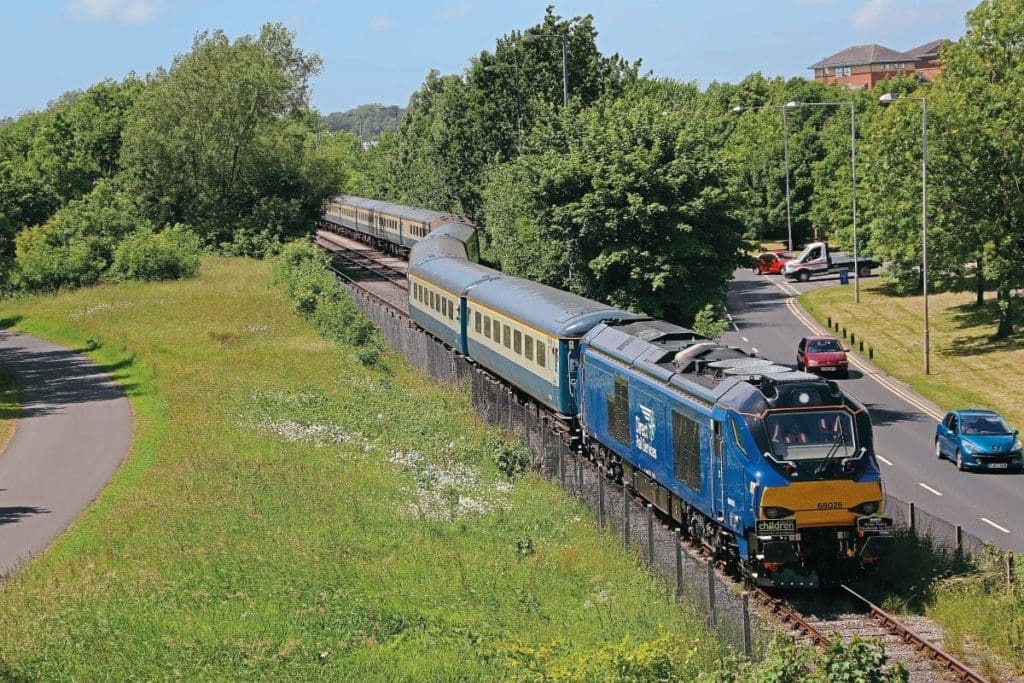Once serving commercial shipping on the River Ribble at Preston, the line to the Port of Preston dates from the dawn of the railway age and is now a unique part of the UK network, with regular freight trains operating over part of what is now a heritage railway. Martyn Hilbert looks at the history of the route.

All photography: Martyn Hilbert
Preston, Lancashire (granted city status since 2002), is located on the lowest point of the River Ribble between the Pennines and the Irish Sea. Since Roman times, commercial shipping had been a feature at this strategic location.
In 1825, the first commercial quay and warehouses were built by the Ribble Navigation Company to facilitate trade, as the industrial age gathered pace and larger ships became the norm.
Enjoy more Railways Illustrated Magazine reading every month.
Click here to subscribe & save.
The North Union Railway, which had opened the route from Wigan to Preston in October 1838 (now part of the West Coast Main Line), promoted and built – in 1846 – a short one-mile, steeply-graded single line branch from Preston station to what was then Victoria Quay on the tidal River Ribble, its primary purpose then being the shipment of Wigan coal in an age before the development of the railway network.
By the mid-19th century, and with the Industrial Revolution in full swing, the town of Preston had become a major cotton spinning centre, with trade to and from the river booming.
Due to tidal restrictions on the size of vessels that could be handled at Preston, The Preston Dock Act was presented to parliament in 1883 by Preston Corporation. This eventually resulted in the diversion of the River Ribble to facilitate the construction of the Albert Edward Dock, which opened in June 1892. The entrance from the river was controlled by a lock gate system, enabling loading and unloading of ships regardless of tidal conditions. At its opening, it was the largest single inland enclosed dock in Europe, at 3000 feet in length and 660 feet in width, with more than 1.1 miles of quayside.

At its peak during the 1920s and 1930s, the dock was served by an internal railway system of 28 miles. The primary cargoes handled at Preston were coal, timber, bananas/exotic fruit and cotton products. The dock and its railway played an important part in the build-up to D-Day in June 1944, when munitions and other supplies were gathered there for onward shipment to the South Coast.
It remained busy after the Second World War, and patronage reached a peak in the late 1960s.
Unfortunately, in the 1970s, the increasing sizes of shipping, changing cargo handling (containers) and the constant need to dredge the river channel from the Irish Sea made the dock complex unprofitable.
A loss of £1.5 million was recorded in 1975, for example, and Preston Corporation subsequently closed it as a commercial port a few years later, in October 1981.
Critical to the railway operation, two facilities located on the dock estate – a petrol storage facility and a tar distillery – would see some of the railway system retained beyond the closure of the dock to commercial shipping.
With the total dock area covering 380 acres, the site was prime redevelopment land and, following a report in 1980, between 1985 and 1992 the entire area was cleared of old infrastructure and a new railway route was built alongside the south side of the dock basin, accessing the tar/petrol facilities via a new road/rail swingbridge. Additionally, new retail, light industrial and residential buildings and a marina transformed what had been a working port.
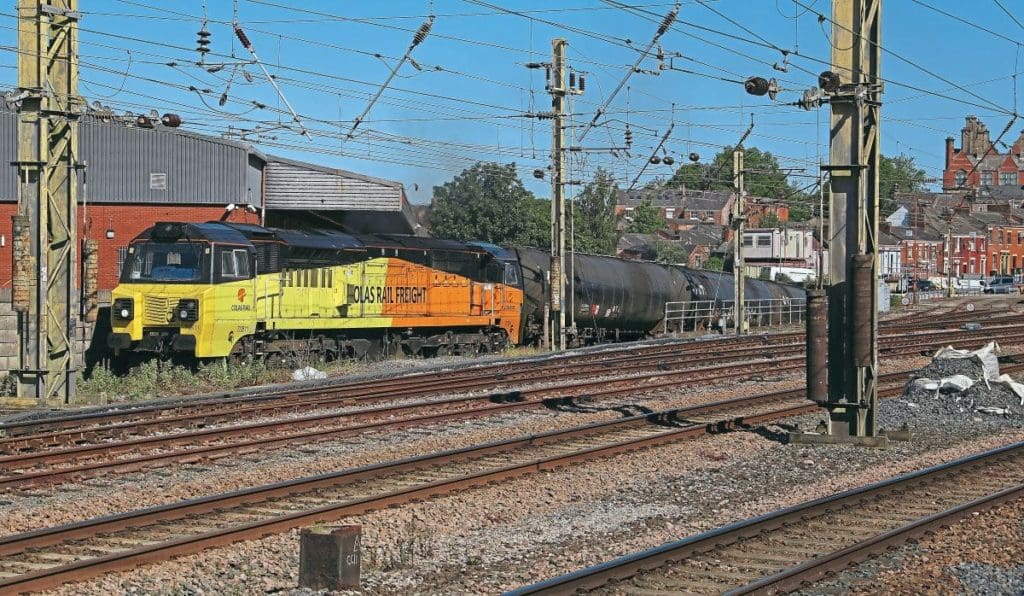
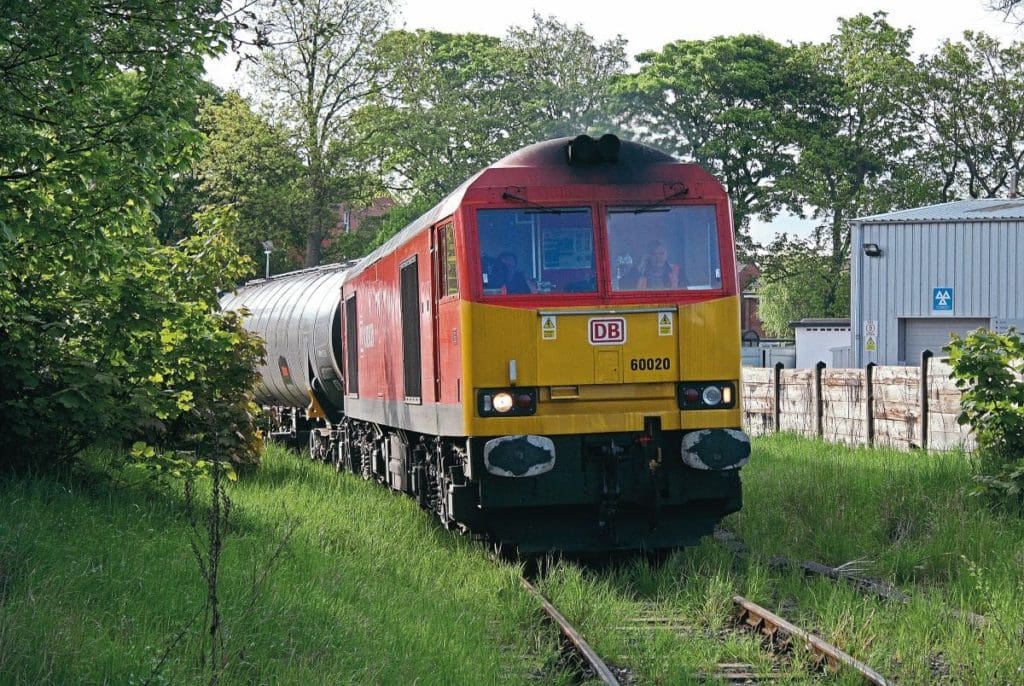
The once extensive dock railway system had in the 1960s been worked by seven Bagnall built 0-6-0 Saddle Tanks, all with distinctive names – Conqueror, Courageous, Energy, Enterprise, Perseverance, Princess and Progress. In 1968, Preston Corporation replaced all of the steam locomotives with three brand-new Sentinel diesel shunters, all being named using some of the nameplates from the steam locomotives they had made redundant – Energy (10281/1968), Enterprise (10282/1968) and Progress (10283/1968).
All three locomotives were delivered in a dark green livery, which was replaced by a red livery in the 1970s, being repainted again into ‘Borough of Preston’ branded yellow livery in the 1980s.
All three Sentinels were retained following the closure of the port in 1981 to handle the bitumen and petroleum traffic on the former dock estate. In the 1980s, Energy (10281) was sold, but the two remaining Sentinels remained in service until they were joined by another almost identical locomotive in 2004 (10226/1965) that had previously worked for the Manchester Ship Canal Company as its DH23.
Following delivery to Preston, the locomotive was fitted with Energy nameplates, with all three Sentinels now owned by Ribble Rail. From the 1960s onwards, BR diesel locomotives regularly visiting Preston Docks were Class 25s, 40s, and 47s, with Class 08s on transfer/trip workings from Ribble Sidings, located alongside the WCML South of Preston Station. Later BR years would see Class 31s, Class 37s and the almost-new Class 56s also making appearances, the latter redeployed during the Miner’s Strikes of 1984/85, and causing quite a stir locally.
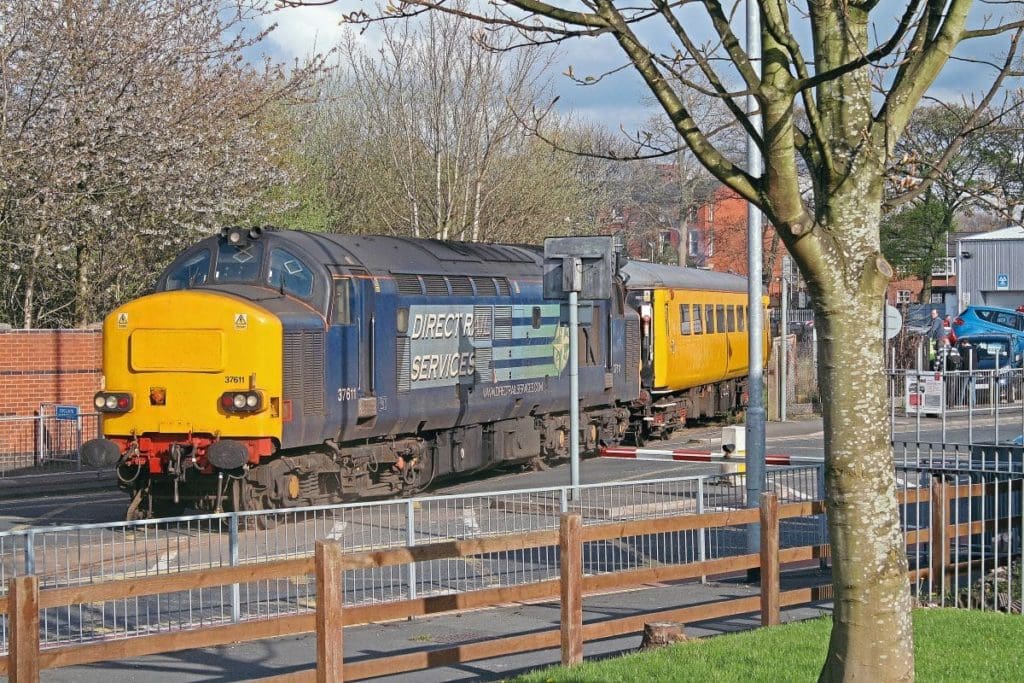

Following privatisation, English Welsh and Scottish Railways (later DB Cargo) held the contract for the inbound and outbound bitumen workings using Class 60s and 66s, but these are now operated by Colas Rail with Class 56/70s.
The Dock Branch can be currently accessed from either the Down goods, or from the Down slow line (via a crossover onto the Down goods) on the WCML just to the south of Preston Station, where the single track bi-directional 40 Chain (0.5 Mile) Strand Road Branch commences.
The initial few yards of track are on a rising gradient of 1-in-400, before an initial 1-in-29 descent, followed by a 1-in-35 descent, and reaching level at Strand Road level crossing, where the current Network Rail boundary is located. The speed limit along the entire line is 20mph, but due to the severe downward gradient, inbound workings travel at a much lower speed.
From the descent adjacent to Preston station, the line disappears from view in a deep brick and stone-lined cutting and passes beneath Christian Road, Waltons Parade, West Cliff, Fishergate Tunnel and Hartington Road, where a stop board is located adjacent to Strand Road level crossing; the crossing and track onto what was once the dock estate is now maintained and owned by the Ribble Steam Railway and its commercial operating freight subsidiary, Ribble Rail, which handles all incoming/outgoing bitumen trains to and from the national network and the Total Energy Bitumen plant.
While the level crossing barriers at Strand Road are controlled by Ribble Rail staff, outgoing trains back towards Preston station are signalled by signal PN116 – controlled by the Preston Power Signalbox – which, in conjunction with signal PN101 at the top of the incline, gives outgoing workings a clear run up the steeply-graded branch. Beyond Strand Road, the branch is flanked by the River Ribble on the south side and by Portway on the north side. This side of the level crossing is the limit of operation for workings on the heritage Ribble Steam Railway.
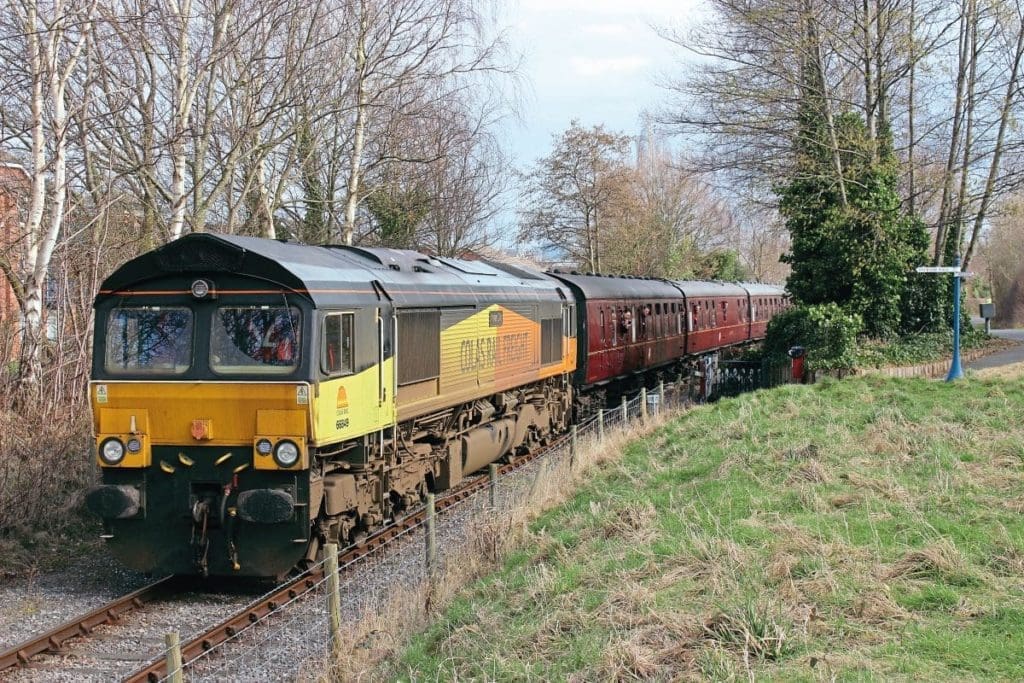

The line here is on a new alignment that was completed in 1985 as part of the dock redevelopment and initially passes the Preston Portway park-and-ride facility before passing beneath the A59 trunk road, just beyond which there is a stop board and ground frame to access three parallel exchange sidings located adjacent to Portway.
It is here where the loco off the incoming bitumen workings from Lindsey Oil Refinery is removed and where the loaded tank wagons are worked onwards by the Ribble Rail Sentinel Diesels.
The returning empties are also worked to the exchange sidings by Ribble Rail locomotives, prior to the inbound (loaded) train arriving. From the west end of the exchange sidings, controlled by another ground frame, the line continues alongside a tree-lined River Ribble, with a continuous ribbon development of housing along Navigation Way on the other side. At the end of a long straight, the line turns through a 90-degree curve, passes over Maritime Way level crossing, and onto the 1000 Tonne road/rail swingbridge across the west end of the dock basin. Movements here are controlled by lifting barriers to segregate road and rail traffic, operated by an adjacent control tower that was constructed in 1985.
Beyond the swingbridge, the single line continues via another 90-degree curve that turns towards the west and passes over Lockside Road level crossing, before entering the complex that since 2005 has been the headquarters of the Ribble Steam Railway, where its station, museum and workshops are located.

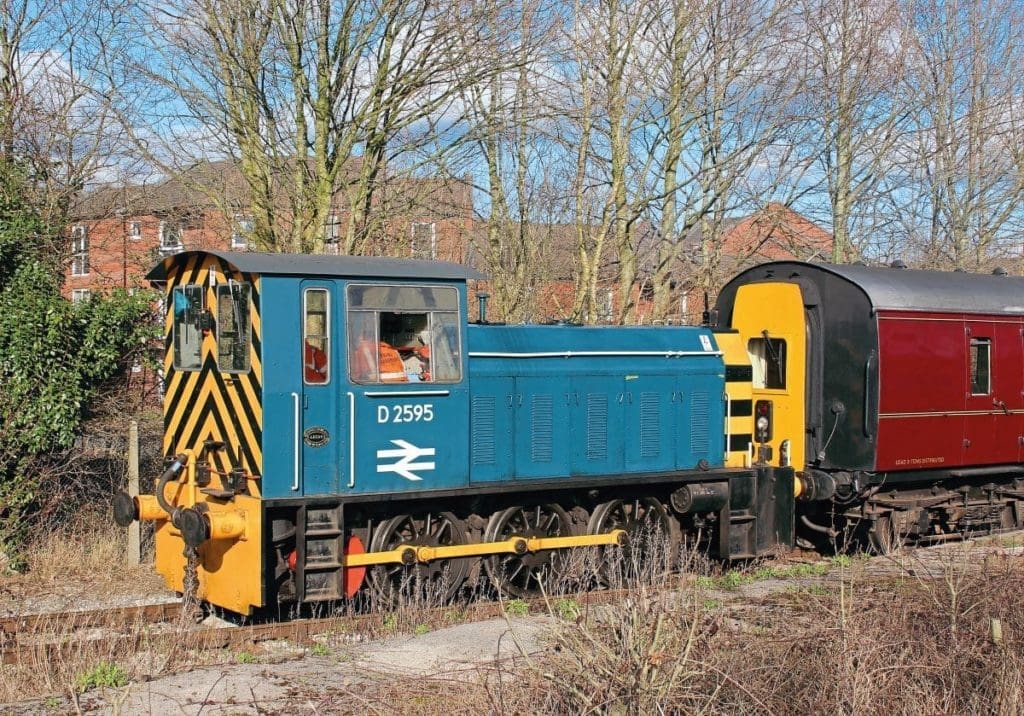
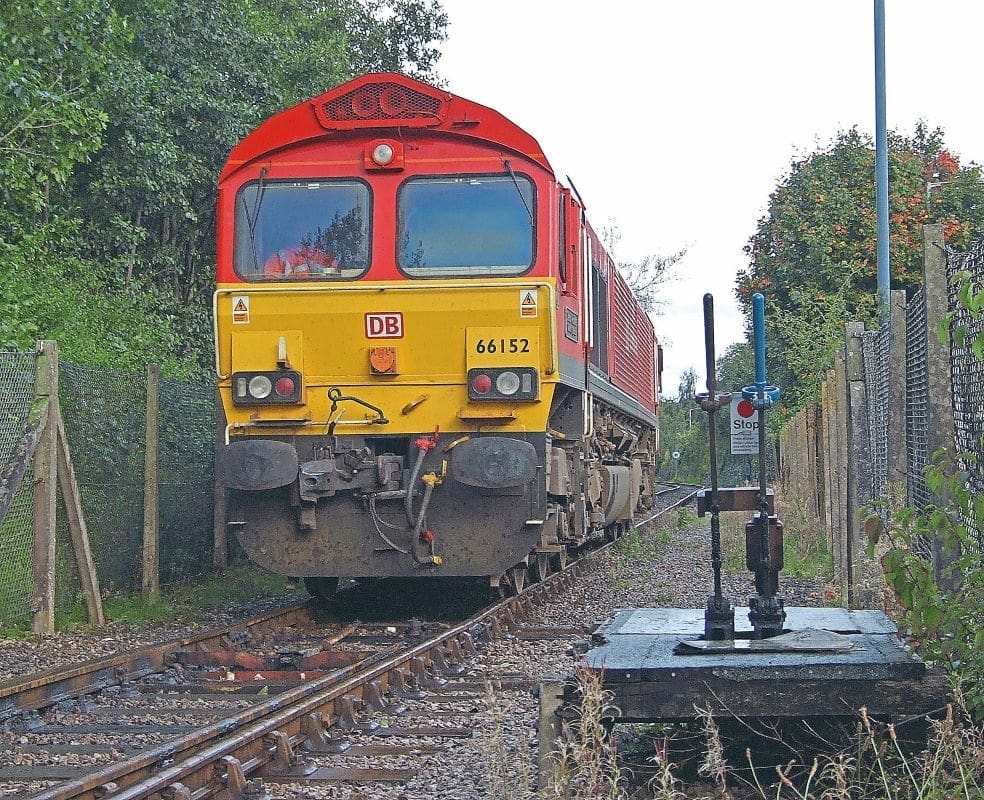
The bitumen tank wagons were once shunted into the bitumen plant via a level crossing across Chain Caul Way, but are now shunted along what is now a short kickback siding alongside which steam-heated pipes on gantries are used for discharging the bitumen directly into the storage tanks located in the plant.
The petroleum storage facility located nearby and supplied by rail was closed in 1992, with the site now being redeveloped.
The 1.5-mile dockland railway is run at weekends and bank holidays by the Ribble Steam Railway, which has a varied selection of industrial steam and diesel locomotives in its collection, including BR Classes 03, 05 and 14, along with a four-wheeled BR Waggon und Maschinenbau diesel railbus dating from 1958.
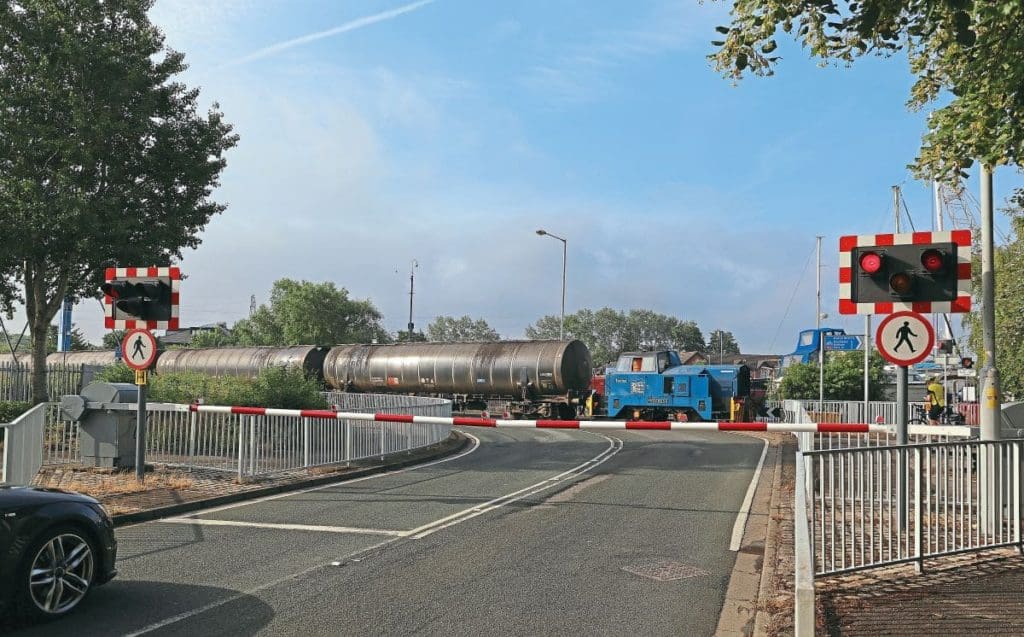
With the branch being connected to the national network, it is not surprising that the line is occasionally visited by railtour companies, which find it a useful piece of ‘rare track’ that has a good stop-off and servicing point at its terminus for the passengers on board.
The branch is used by the regular overnight Lindsey to Preston Docks Bitumen working (6M32) and has a usual morning arrival at about 07.45.
The return working (6E32) with the empties normally departs at about 10.05. Currently operated by Colas Rail Freight, the bitumen trains utilise mostly Class 70s, with occasional appearances by pairs of Class 56s.
A visit to the Preston Docks branch is a day out with a difference, and capturing the Ribble Rail Sentinel’s at work is something refreshingly different on the UK railway network.
